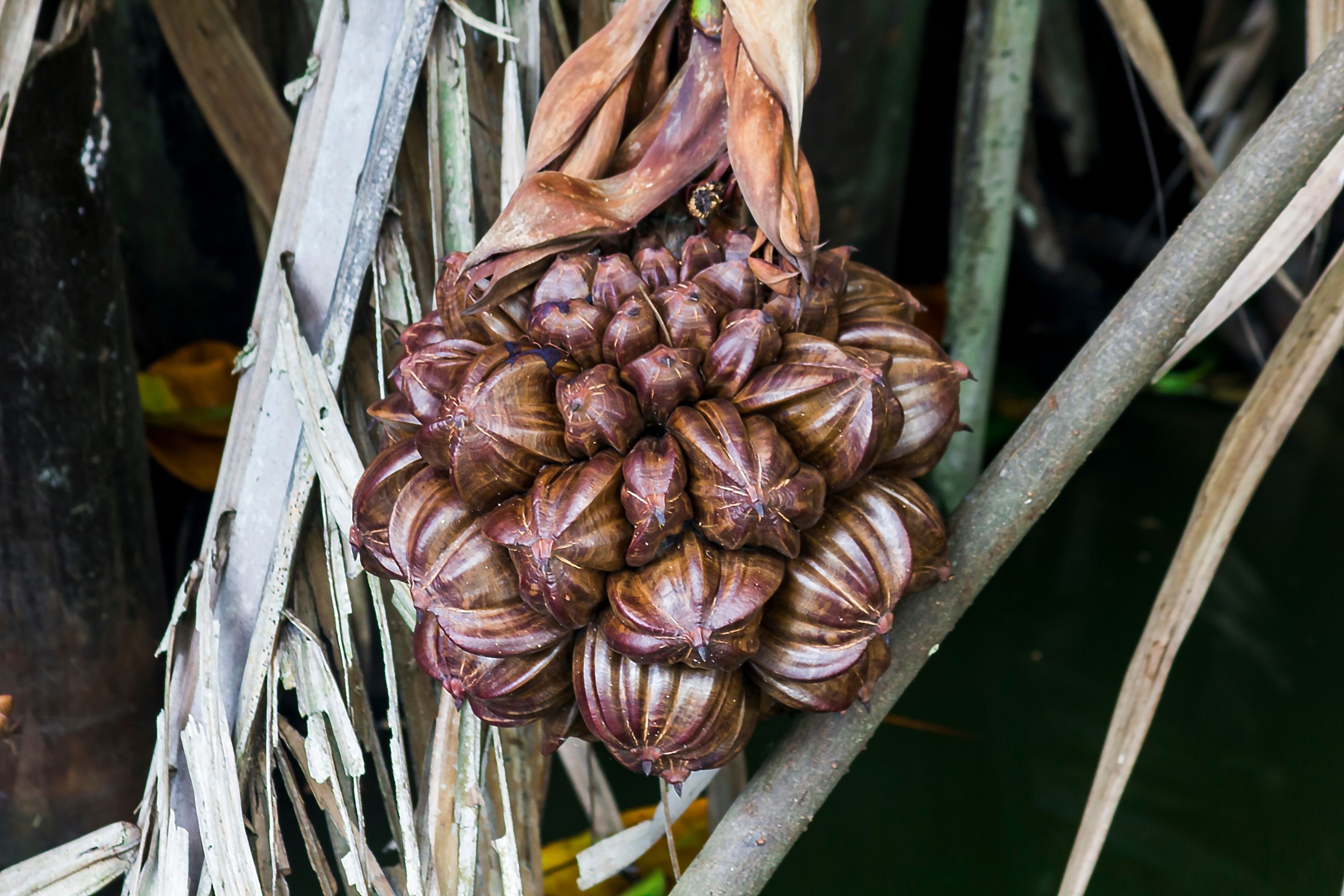Sugar palm
(Arenga pinnata)

Description
Arenga pinnata (syn. Arenga saccharifera) is an economically important feather palm native to tropical Asia, from eastern India east to Malaysia, Indonesia, and the Philippines in the east. Common names include sugar palm, areng palm (also aren palm or arengga palm), black sugar palm, and kaong palm, among other names. It is a medium-sized palm, growing to 20 m tall, with the trunk remaining covered by the rough old leaf bases. The leaves are 6–12 m long and 1.5 m broad, pinnate, with the pinnae in 1–6 rows, 40–70 cm long and 5 cm broad. The fruit is subglobose, 7 cm diameter, green maturing black. It is not a threatened species, though it is locally rare in some parts of its range. It serves as an important part of the diet of several endangered species, including cloud rats of the genus Phloeomys. The sap is harvested for commercial use in southeast Asia, yielding a sugar known in India as gur or in Indonesia as gula aren. The sap is collected and made as lahang, a traditional cold sweet drink, and is also fermented into vinegar (Filipino sukang kaong) and palm wine (Filipino tubâ, Malaysian and Indonesian tuak). Edmund Roberts talks about drinking an alcoholic beverage made in the Cavite area. He described it as a "fermented" and "intoxicating liquor". He said that it was "the pith furnished with sugar – when the liquor was properly boiled down, a farina...and of the inside of its triangular-shaped fruit a sweetbread was made." Sugar (jaggery) is also commonly derived from the fresh sap in Indonesia and the Philippines. These are traditionally prevented from fermenting by placing crushed chili or ginger in the collecting container. The sap is boiled until it reduces to a thick syrup which is then dried into a brown sugar. Similar sugar extraction methods are also traditionally used for other sugar palms, like the buri palm (Corypha elata). The raw juice and pulp are caustic. This crop may develop into a major resource of biofuel (ethanol). In the Philippines, an annual Irok Festival is celebrated in the municipality of Indang in Cavite which is a major producer of kaong fruits, sukang kaong, and tubâ in the country. Irok is a local name for Arenga pinnata in the northwestern Philippines. According to Sundanese folklore, the spirit known as Wewe Gombel dwells in the Arenga pinnata palm, where she also has her nest and keeps the children she abducts.
Taxonomic tree:







